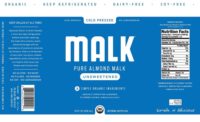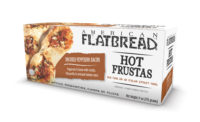
What industry trends bode well for growing small to mid-sized companies?Refrigerated & Frozen Foodstalks with David Houser a managing director for Lincoln International LLC, a global mid-market investment bank in Chicago.
Refrigerated & Frozen Foods: In your opinion, what’s been the most interesting development in the food industry and how does it affect small to mid-sized food processors?
David Houser: At Lincoln International, we have witnessed the impact of high commodity costs, which bring change to existing business models and reduce the competitive advantages related to scale.
For example, with high transportation costs, centralized manufacturing is at a disadvantage in many categories. In previous economies, a well-capitalized company could build a large, state-of-the-art facility that serves the entire country. The strategy is predicated on the advantage of scale in driving lowest cost production. However, in the current environment, transportation costs offset such advantages.
Today, transportation costs provide a barrier that hinders the national, centralized player from successfully competing in regional markets. The small and mid-size regional company has a barrier that helps it compete with the large, national player.
R&FF: Sometimes executives complain about the rapid pace of change in the food industry. Yet, do these rapid shifts in markets or consumer demographic trends actually bode well for small to mid-size companies?
Houser: The food and beverage industry offers a degree of specialization that constantly provides new opportunities for well-positioned, small and mid-sized companies. Although the pace of activity may seem overwhelming, the rate of change allows smaller companies to effectively compete and succeed by nimbly responding to trends.
The gourmet food trend illustrates the opportunities that constantly arise in food and beverage. More specifically, I think the gelato category exemplifies this trend. Ice cream is a large, consolidated category that would seem to have few opportunities for smaller players. However, the gelato category is growing remarkably at both the retail and foodservice channels.
Although it’s still a small category, gelato lacks a large, well-capitalized incumbent brand. The category also benefits from healthy eating trends because true artisan gelato is lower in fat than most American ice creams. Recognizing both the growth and opportunity, Encore Consumer Capital, a San Francisco-based private equity firm specializing in food and beverage investments, recently made an investment in Ciao Bella.
R&FF: From an investment banking perspective, what are a few food and beverage trends that you are watching?
Houser: As I mentioned, the gourmet food trend is exciting. Despite the economy, we continue to see a number of rapidly growing food companies in high growth, gourmet niches of mature categories. Interestingly, although the economy has impacted restaurants and foodservice - gourmet foods in certain retail categories are holding up better as “foodies” decide to spend their food dollars for meals at home. Other fascinating trends continue in healthy eating and private label.
R&FF: How about the impact of higher commodity prices?
Houser: Perhaps the most fluid trend relates to commodity prices. When commodity prices initially spiked, we saw immediate margin declines for food companies. These businesses then went en masse for price increases that offset the higher commodity costs. In this environment, we have seen a change in retailer behavior in some food categories. In evaluating competing food suppliers, the price volatility almost forces the retailers to focus less on price and more on product quality (or other category management criteria). Clearly, every category is different, but the point is that volatility clearly has its benefits.
R&FF: So have rising costs affected merger and acquisition interest and activity?
Houser: On food and beverage deals at Lincoln International, investor interest remains very strong. In my opinion, investor appetite for food and beverage companies greatly exceeds the supply of attractive opportunities. As a result, food and beverage valuation multiples are higher than those in other industries. However, the financial and commodity markets have a significant impact on deal activity.
R&FF: Please tell us a little more.
Houser: Financial investors such as private equity firms need to invest capital. They are looking for industries that provide safer returns and less risk in a challenging economy. Food and beverage companies - while having their own issues - generally are viewed as “safe havens” during such times. However, private equity firms now have less access to borrowed money than strategic acquirers. Furthermore, they have limited ability to overcome challenges related to rising commodity costs.
For these reasons, strategic acquirers are more competitive in the current M&A market. In general, strategic acquirers, such as publicly traded food and beverage corporations, have significant cash on their balance sheets. With limited volume growth, the strategic investors are looking to acquire companies rather than dividend the excess cash to shareholders. In addition, strategic acquirers generally understand and can overcome the challenges of the commodity markets. For these reasons, strategic acquirers are better positioned to make acquisitions.
R&FF: Would you share a few thoughts about the coming year? Where might we see the most M&A activity?
Houser: From an investment banking perspective, the current financial crisis requires us to closely watch macroeconomic trends that will dramatically alter the flavor of M&A activity in 2009.
In 2009, acquisitions by strategic acquirers will account for a large portion of M&A activity. With credit in short supply, private equity firms (that rely greatly on borrowed money) generally cannot offer premium valuations for middle market food and beverage companies. While private equity still has a significant interest in food and beverage investments, the lack of available credit makes private equity firms less competitive in acquiring companies in the current market.
Potential sellers will realize the importance of strategic outcomes. Savvy business owners will reflect this consideration in determining the timing of the sale, the process for selling the company, and the choice among financial advisors.
R&FF: Please tell us a little about Lincoln International’s involvement in the industry.
Houser: Approximately 70 percent of Lincoln International’s food and consumer transactions are sales to strategic acquirers. Based on a review of investment banking Web sites, we are more than 50 percent more likely to drive a strategic outcome than other M&A advisors.
We drive this success in three critical ways. First, we take an international approach that is unique in the middle market. With Lincoln offices in nine countries, we ensure that we can penetrate strategic investors around the world. With the weakness of the U.S. currency, foreign investors are more active than ever, and our international presence is now much more important to small and mid-sized companies.
In addition, having a dedicated food and consumer group provides us with industry knowledge and experience, as well as key relationships with corporate buyers. Finally, we are dedicated to quality execution which, to Lincoln, means having experienced M&A professionals formulate and execute a strategy to provide the best outcome possible for our clients.





